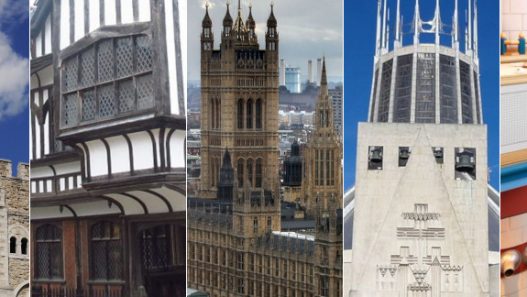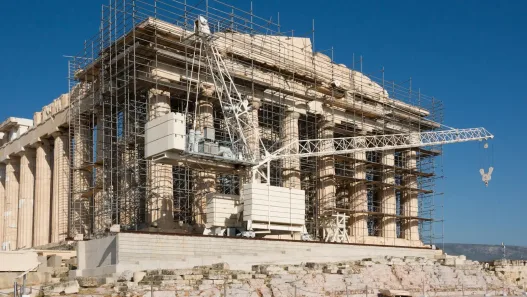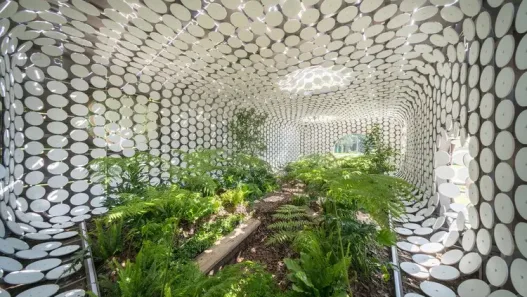Adaptive reuse is a fascinating approach to architecture and urban development that involves repurposing old buildings for new uses. This practice not only breathes new life into historically significant structures, but also promotes sustainability by minimizing waste and reducing the need for new construction materials. As cities develop, the demand for innovative solutions to urban problems increases, making adaptive reuse an increasingly relevant and valuable strategy.
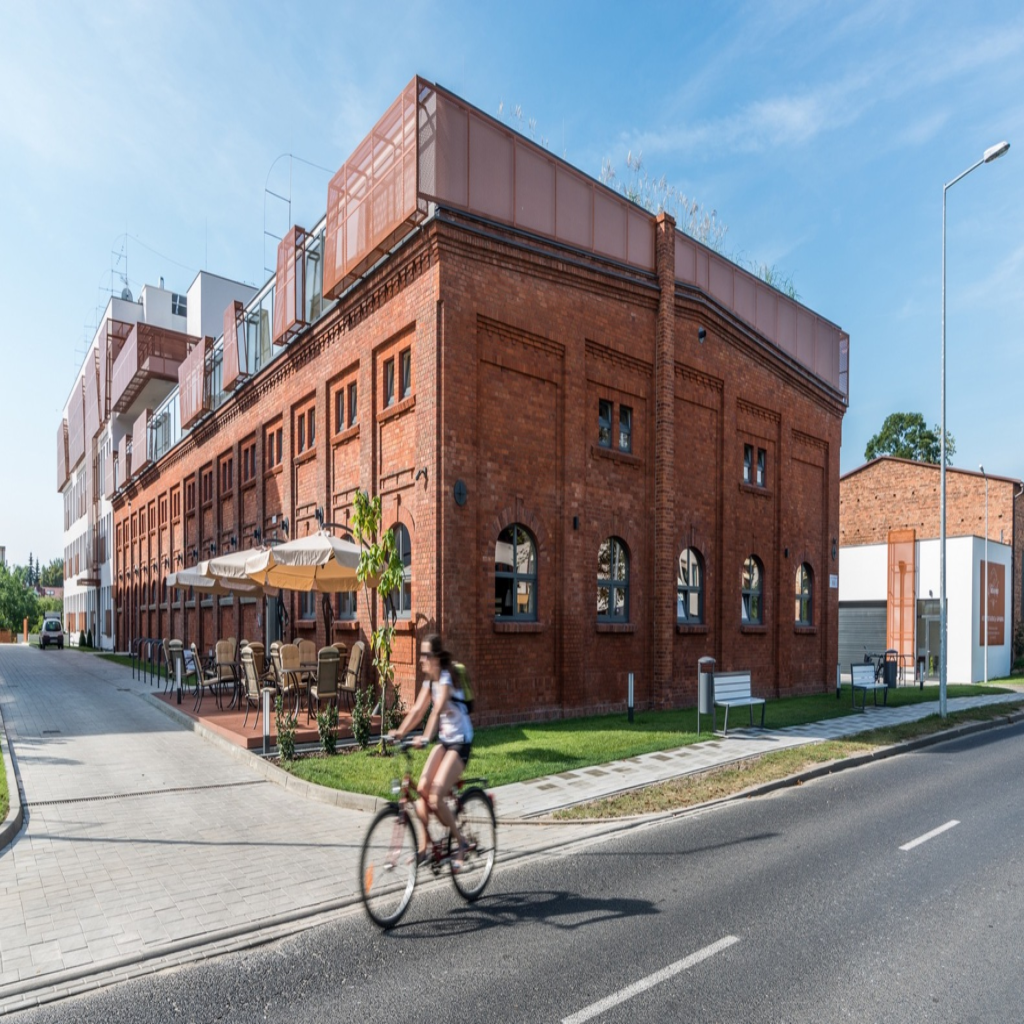
Definition and Importance
In essence, adaptive reuse is the process of altering an existing building for a purpose other than the one for which it was originally designed. This can range from converting an old factory into loft apartments to transforming a historic church into a community center. The importance of adaptive reuse lies in its ability to preserve history while responding to contemporary needs. By preserving elements of the past, communities can celebrate their heritage, promote local identity and create spaces that resonate with the public.
Moreover, adaptive reuse plays a crucial role in sustainable development. In an era when environmental concerns are paramount, the reuse of existing structures reduces the carbon footprint associated with new construction. This method also conserves resources and minimizes disruption of established communities, making it a practical choice for urban planners and developers.
Historical Context
The concept of adaptive reuse is not new; it has historical roots going back centuries. Many ancient civilizations adapted buildings for new functions, such as turning temples into churches. In the modern era, especially in the late 20th century, as industrial cities began to decline, adaptive reuse gained traction. Factories and warehouses were converted into residential lofts, art galleries and commercial spaces.
Cities such as New York, London and Berlin have been at the vanguard of this movement, showing how old buildings can be revitalized to meet modern needs. This historical context highlights a broader trend: as societies change, so do their architectural landscapes, reflecting shifts in cultural and economic priorities.
Benefits of Adaptive Reuse
The benefits of adaptive reuse are manifold. First, it promotes sustainability by reducing waste and preserving existing materials, which can be both cost-effective and environmentally friendly. In many cases, the embodied energy of a building (the energy consumed during its construction and operation) is significant. By reusing a building, we conserve this energy.
Secondly, adaptive reuse often increases community engagement. When local residents see their historic buildings transformed rather than demolished, it fosters a sense of pride and belonging. These projects can also stimulate local economies by attracting visitors and encouraging the development of new businesses in revitalized areas.
Furthermore, adaptive reuse encourages innovation. Architects and designers are challenged to think creatively about how to preserve the essence of a building while accommodating contemporary functions. This can lead to unique and inspiring designs that combine the old with the new.
Implementation Challenges
Despite its many advantages, adaptive reuse is not without its challenges. One of the most significant obstacles is navigating regulatory frameworks. Zoning laws, building regulations and conservation guidelines can complicate the process and often require extensive planning and negotiation.
Financial constraints can also pose a challenge. While adaptive reuse can provide cost savings in some areas, the initial investment in retrofitting and renovating old buildings can be significant. Developers need to weigh these costs against potential returns, which can sometimes prevent projects from moving forward.
There can also be technical challenges associated with modernizing infrastructure while maintaining the integrity of a building. Integrating contemporary systems for heating, cooling and electricity can be complex in older buildings and requires innovative engineering solutions.
Case Study Overview
Several inspiring case studies can be examined to illustrate the principles of adaptive reuse. One notable example is the High Line in New York City, where a former elevated railroad was transformed into a vibrant public park. This project not only preserved a unique piece of infrastructure, but also revitalized the surrounding neighborhoods, demonstrating how adaptive reuse can enhance urban life.
Another interesting example is the Tate Modern in London, where a disused power station was transformed into a world-renowned art museum. Hosting contemporary art installations while preserving the industrial character of the building demonstrates how historic architecture can serve modern cultural purposes.
These examples, among others, highlight the versatility and potential of adaptive reuse. As societies continue to seek sustainable and meaningful ways to thrive, embracing the past through adaptive reuse will undoubtedly play an important role in shaping the future of our built environment.
Key Principles of Adaptive Reuse
Adaptive reuse is an architectural practice that breathes new life into old buildings, transforming them for modern use while respecting their historical significance. This approach not only preserves cultural heritage, but also promotes sustainability and innovation. Understanding the basic principles of adaptive reuse can help us appreciate its impact on urban landscapes, communities and the environment.
Preserving Historic Integrity
One of the most fundamental aspects of adaptive reuse is the preservation of historic integrity. This principle emphasizes the importance of preserving the original character and significance of a building when adapting it for new purposes. Historical integrity involves careful consideration of architectural details, materials and the overall design sense of the original structure.
For example, when an old factory is converted into loft apartments, architects often try to preserve original features such as exposed brick walls, large windows and industrial beams. This not only preserves the building’s unique charm, but also tells a story about its past. The challenge lies in balancing modern needs with the desire to honor history. Working with historians and preservationists can guide this process and ensure that adaptations respect the narrative of the building while meeting contemporary functional requirements.
Environmental Sustainability
The environmental benefits of adaptive reuse are enormous. By redesigning existing structures, we significantly reduce the demand for new materials and the energy associated with their production. This practice minimizes waste, as old buildings often contain materials such as wood, metal and brick that can be salvaged and reused.
Moreover, adaptive reuse often leads to a lower carbon footprint. For example, converting an old school into a community center not only reuses the existing building, but can also reduce the need for new construction, which is typically resource-intensive. Moreover, renovated buildings can be upgraded with modern energy-efficient technologies, further enhancing their sustainability. This principle aligns with the broader goals of environmental protection and responsible urban development, and makes adaptive reuse a critical strategy in the fight against climate change.
Community Engagement
Community involvement is vital in the adaptive reuse process. A successful project often depends on the involvement of local stakeholders (residents, business owners and community organizations). Community involvement ensures that the new use of the building meets local needs and reflects the aspirations of the people who will interact with it.
For example, when a former church is converted into a community arts center, local artists and residents can be involved in the design process to ensure that the space hosts workshops, exhibitions and events that match the interests of the community. This collaborative approach fosters a sense of ownership and pride, helping to seamlessly integrate the repurposed building into the fabric of the community. As a result, community engagement not only increases project relevance, but also helps build stronger, more connected neighborhoods.
Economic Viability
Economic viability is another cornerstone of adaptive reuse. While preserving historic buildings may seem costly, the long-term financial benefits often outweigh the initial investment. Renovation of an existing building is often less costly than new construction, especially when the costs associated with land acquisition, permits and demolition of old structures are taken into account.
Moreover, adaptive reuse can stimulate local economies. For example, transforming an abandoned warehouse into a vibrant marketplace can attract new businesses, create jobs and attract visitors to the area. Cities like San Francisco and New York have seen neighborhoods revitalized, property values increase, and tax revenues rise thanks to successful adaptive reuse projects. The economic viability of these projects not only supports the sustainability of the building, but also contributes to the wider economic health of society.
Design Innovation
Finally, design innovation plays a crucial role in adaptive reuse. This principle encourages architects and designers to think creatively about how to integrate modern functions into existing spaces. The challenge lies in finding ways to respect the old while embracing the new, which often results in unique and thought-provoking designs.
The High Line in New York, for example, is a notable example of design innovation. This elevated railroad has been transformed into a public park, showcasing a mix of original industrial elements and contemporary landscaping. The project not only preserves the historic structure of the railroad, but also reimagines it as a vibrant green space for the community. Such innovative approaches can inspire new architectural trends and encourage a more dynamic interaction between old and new, ensuring that the essence of the past informs the future.
In conclusion, the principles of adaptive reuse underscore a thoughtful and multifaceted approach to architecture. By focusing on historical integrity, environmental sustainability, community engagement, economic viability and design innovation, we can create places that honor the past while paving the way for a vibrant future. This practice not only enriches our urban environments, but also encourages a deeper connection between people and their built heritage.
Successful Examples of Adaptive Reuse
Adaptive reuse is a fascinating concept in architecture that breathes new life into old buildings. Instead of demolishing buildings that have lost their original purpose, adaptive reuse transforms them into modern spaces that serve contemporary needs. This approach not only preserves historic value, but also promotes sustainability by reducing waste and the environmental impact of new construction. Let’s explore some successful case studies that highlight the creativity and effectiveness of adaptive reuse.
Case Study: The High Line, New York
The High Line in New York is a striking example of adaptive reuse, transforming an abandoned elevated railroad into a vibrant public park. Originally built in the 1930s to transport goods to the meatpacking district, the railroad fell into disuse in the 1980s. Instead of allowing it to be demolished, a group of advocates designed a green space that would celebrate the city’s industrial past while offering a unique urban experience.
The park opened in phases from 2009, seamlessly integrating nature with urban architecture. Visitors can stroll through lush gardens featuring native plants, art installations and spectacular views of the city. The High Line has become a cultural center that attracts millions of visitors each year and inspires similar projects around the world. This transformation demonstrates how adaptive reuse can increase community engagement and revitalize neighborhoods.
Case Study: Tate Modern, London
Tate Modern in London stands as a testament to the power of adaptive reuse. Housed in the former Bankside Power Station, this contemporary art museum has quickly become one of the most visited art institutions in the world. The decision to transform the former power station into a gallery was not only innovative, but also a bold statement about the changing nature of urban spaces.
The building’s industrial features, such as the large turbine hall, provide an impressive backdrop for large-scale installations and exhibitions. Preserving the original structure of the power station, Tate Modern successfully combines history with modern art to create a unique visitor experience. The museum has become a major player in London’s artistic landscape, triggering a cultural renaissance in the surrounding area. This case illustrates how adaptive reuse can redefine a city’s identity and promote cultural tourism.
Case Study: Battersea Power Station, London
Another notable example of adaptive reuse is Battersea Power Station, an iconic symbol of London’s industrial heritage. Once one of the largest brick buildings in Europe, the power station ceased operations in the 1980s and fell into disrepair for years. In the early 2000s, however, a major redevelopment project was launched, aiming to transform the derelict site into a mixed-use development including residential, commercial and leisure space.
During the renovation, much of the building’s character was retained, while modern amenities and sustainable practices were introduced. The striking Art Deco architecture remains a focal point attracting residents and tourists alike. This project not only revitalizes a historic landmark, but also enhances the local economy and community. Battersea Power Station exemplifies how adaptive reuse can balance conservation with innovation and create spaces that are both functional and iconic.
Case Study: The Ace Hotel, New York
Located in New York’s NoMad neighborhood, Ace Hotel is one of the best examples of adaptive reuse in the hospitality industry. Originally built as a hat factory in the early 1900s, the building has undergone significant renovations to become a trendy hotel. The developers have retained many original architectural elements, such as exposed brick walls and vintage furniture, which give the hotel a distinctive character.
Ace Hotel has become a cultural attraction with its vibrant lobby, local artwork and lively community atmosphere. Catering to both travelers and locals, the hotel hosts events and showcases local talent. This project demonstrates how adaptive reuse can meet modern demands while honoring a building’s history and creating a unique sense of place that resonates with both guests and the community.
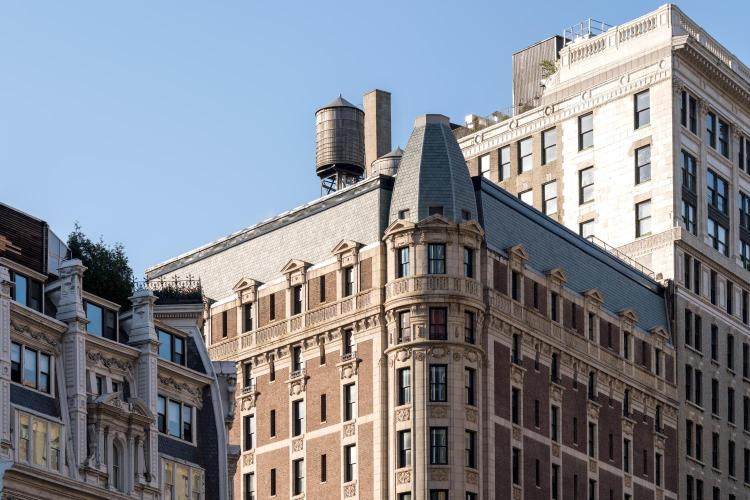
Case Study: Gazometer, Vienna
The Gazometer in Vienna is an impressive example of adaptive reuse that skillfully blends the past with the present. Originally built in the late 19th century to store gas, these four massive gas tanks were converted in the early 2000s into a mixed-use development including residences, offices and a shopping center.
Gasometer’s design honors the industrial heritage while incorporating modern elements such as glass facades and contemporary interiors. Each of the four tanks has a unique architectural treatment that provides a visually striking contrast between old and new. This project has not only revitalized a historic site, but also contributed to Vienna’s urban fabric, making it a vibrant destination for residents and visitors alike. Gasometer demonstrates how adaptive reuse can revitalize urban areas while celebrating their historical significance.
In summary, these case studies illustrate the diverse applications of adaptive reuse in different contexts and cities. By creatively transforming old buildings, architects and developers can foster community, preserve history and promote sustainability, making adaptive reuse an important strategy for future urban development.
Impact on Urban Development
Urban development plays a crucial role in shaping the environments where we live, work and play. As cities evolve, our approach to architecture and urban planning has a significant impact on the quality of life for residents. By focusing on sustainable practices, community engagement and innovative design, urban development not only meets current needs, but also anticipates future challenges. The following sections explore various aspects of urban development and its profound impacts on societies.
Revitalizing Neighborhoods
Revitalization refers to the process of renewing and transforming areas that have experienced decline, often due to economic decline or neglect. This process breathes new life into neighborhoods, making them more attractive and functional. An important part of revitalization is the restoration of historic buildings, which integrates modern amenities while preserving the cultural essence of the area.
In cities like Detroit, for example, formerly abandoned factories have been transformed into vibrant community spaces, art galleries and loft apartments. This not only preserves architectural heritage, but also fosters a sense of pride among residents. As neighborhoods revitalize, there is often an influx of new businesses, cafes and parks, improving the social fabric of the community and encouraging interaction among residents.
Economic Growth and Job Creation
Urban development is an important driver of economic growth. When cities invest in infrastructure such as roads, public transportation and utilities, they pave the way for new businesses to flourish. This creates job opportunities not only in the construction sector, but also in the service sectors that follow.
Take the case of San Francisco, where tech companies flock to the city because of its supportive infrastructure and vibrant urban environment. The growth of the tech sector has led to an increase in employment, attracting talent from around the world. As people move to the area for employment, they contribute to the local economy, creating a ripple effect that benefits sectors ranging from real estate to retail.
Reducing Urban Sprawl
Urban sprawl occurs when cities expand outwards, often leading to the development of low-density suburbs that consume valuable land and resources. Effective urban development focuses on creating compact, walkable communities that reduce the need for long commutes and car dependency.
Cities like Barcelona have embraced this concept with its superblock model, which limits vehicular traffic in certain areas to prioritize pedestrians and cyclists. This approach not only encourages healthier lifestyles, but also minimizes environmental impacts by reducing carbon emissions. By encouraging higher density living and mixed-use developments, cities can protect green spaces and create more sustainable urban environments.
Enhancing Cultural Identity
Architecture and urban design are powerful tools for expressing cultural identity. As cities develop, incorporating elements that reflect local history and traditions can foster a unique sense of place. These elements can include public art, cultural centers, and architecture that respects the roots of the community.
For example, vibrant murals in the neighborhoods of Los Angeles celebrate the diverse cultures that have shaped the city. Such artistic expressions not only beautify the urban landscape, but also tell stories that resonate with residents and visitors alike. When urban development honors cultural identity, it enhances community pride and cohesion by creating spaces where people feel connected to their heritage.
Enhanced Public Spaces
Public spaces are the heart of urban life and serve as gathering places for communities. Thoughtful urban development prioritizes the creation and enhancement of parks, plazas and recreational spaces. These spaces encourage social interaction and provide residents with areas where they can relax, exercise and participate in community activities.
Consider New York City’s High Line, a former elevated railroad converted into a green walkway. This innovative use of space not only provides a unique urban experience, but also increases property values and attracts tourism. By investing in public spaces, cities can significantly improve the quality of life of their residents and foster a sense of community and belonging.
As a result, the impact of urban development is multifaceted and affects everything from economic growth to cultural identity. By focusing on revitalization, sustainable practices and community-oriented design, cities can create vibrant environments that improve the lives of their residents while preserving their unique character.
Design Considerations for Adaptive Reuse
Adaptive reuse is an exciting approach to architecture that breathes new life into existing structures. It involves redesigning old buildings for new uses, responding to modern needs while preserving their historical significance. This practice not only encourages creativity, but also supports sustainability by reducing demand for new materials and minimizing waste. As we explore various design considerations for adaptive reuse, we will examine architectural compatibility, building codes and regulations, sustainability practices, accessibility features, and integration with surrounding infrastructure.
Architectural Compatibility
One of the most important considerations when embarking on an adaptive reuse project is architectural compatibility. This concept revolves around ensuring that the new design is compatible with the existing structure. Each building has a unique character, shaped by its history, style and materials. For example, converting an old factory into loft apartments requires the careful integration of modern amenities without compromising the original charm of the building.
Architects must carefully analyze the building’s form, proportions and materials. Preserving elements such as brick facades, large windows and distinctive rooflines can evoke a sense of nostalgia while providing a functional space. Successful adaptive reuse projects often celebrate these historic features and create a dialog between old and new. A striking example is the High Line in New York, where an abandoned railroad has been transformed into a vibrant public park, blending its industrial past with contemporary urban design.
Building Codes and Regulations
Navigating building codes and regulations is another critical aspect of adaptive reuse. Every structure must comply with local, state and federal laws governing safety, health and accessibility. These regulations can pose challenges, especially when adapting older buildings built before the existence of many modern codes.
For example, converting a historic church into a community center may require extensive changes to meet fire safety standards or install modern plumbing and electrical systems. Architects and developers should work closely with urban planners and preservationists to ensure that any changes respect the historic integrity of the building while meeting legal requirements. This collaboration can lead to innovative solutions, such as using materials that mimic the original but meet current performance standards.
Sustainability Practices
Sustainability is at the heart of adaptive reuse, making it an environmentally friendly alternative to new construction. By repurposing existing buildings, we conserve resources and reduce the carbon footprint associated with demolishing old structures and constructing new ones.
Incorporating sustainable practices into adaptive reuse projects can take many forms. For example, installing energy-efficient systems, using natural ventilation and incorporating renewable energy sources such as solar panels can significantly improve a building’s sustainability profile. In addition, preserving existing materials reduces waste and minimizes the need for new resources. Steel House, which transformed an abandoned factory in New Jersey into a mixed-use development emphasizing energy efficiency and green building practices, is an important example of how sustainability can coexist with historic preservation.
Accessibility Features
Creating accessible spaces is crucial in adaptive reuse projects. Buildings should accommodate individuals with different needs and ensure that everyone can navigate and enjoy the space. This often means retrofitting older structures to include features such as ramps, elevators and accessible toilets.
For example, converting an old school building into a cultural center requires careful planning to ensure that all spaces are accessible to individuals with mobility difficulties. Architects may need to creatively reconfigure entrances and pathways while respecting the historic elements of the building. Integrating universal design principles not only increases accessibility, but also enriches the overall user experience, making the space inviting for everyone.
Integration with Surrounding Infrastructure
Finally, successful adaptive reuse projects should consider their relationship with the infrastructure around them. A building does not exist in isolation; it is part of a larger community. It is vital to ensure that the new use complements and enhances the neighborhood.
For example, a former warehouse converted into a boutique hotel should be connected to public transportation options, bike paths and pedestrian walkways to promote accessibility. Engaging with local stakeholders, including residents and businesses, can provide valuable insights into community needs and aspirations. Creating vibrant public spaces, such as gardens or plazas, can encourage community interaction and revitalize an area. A prime example is the transformation of the Tate Modern in London, where a former power station was redesigned not only as a gallery but also as a cultural center that integrates seamlessly with the Thames riverfront.
As a result, the design considerations for adaptive reuse are multifaceted and require a balance between preserving history and meeting contemporary needs. By focusing on architectural compatibility, complying with regulations, embracing sustainability, prioritizing accessibility and integrating with the environment, architects can create spaces that are not only functional but also resonate with stories of the past while looking to the future.
The Future of Adaptive Reuse
Adaptive reuse is an architectural practice that breathes new life into old buildings, transforming them for contemporary uses while preserving their historic essence. As urban centers become more crowded and the need for sustainable practices grows, adaptive reuse is emerging as a vital solution. This approach not only revitalizes neglected areas, but also reduces waste and mitigates environmental impacts associated with new construction. In exploring the future of adaptive reuse, we uncover trends in urban development, technological innovations, policy recommendations, community engagement and long-term sustainability goals.
Trends in Urban Development
Urban development is undergoing a significant transformation and cities are increasingly recognizing the value of their historic fabric. One prominent trend is the shift towards mixed-use developments, where older structures are repurposed to house retail spaces, offices and residential units. This approach encourages vibrant communities and reduces urban sprawl by maximizing existing infrastructure.
Another trend is the emphasis on walkability and connectivity. Cities are redesigning their layouts by integrating adaptive reuse projects that foster pedestrian-friendly environments. For example, old warehouses once located in industrial areas are being converted into art galleries, cafes and apartments, creating vibrant neighborhoods that attract locals and tourists alike.
Also, the rise of remote working has led to a rethinking of office spaces. Many companies are opting for flexible, collaborative environments in redesigned buildings that allow for a mix of work and leisure that suits modern lifestyles. This trend not only supports the local economy, but also demonstrates a commitment to sustainability by utilizing existing resources.
Technological Innovations
Technological advances are playing a crucial role in the future of adaptive reuse. The integration of Building Information Modeling (BIM) allows architects and developers to visualize and plan renovations more efficiently. This technology facilitates a deeper understanding of a building’s structure, enabling more informed decisions on which elements to retain and which to replace.
Furthermore, innovations in materials and construction techniques are increasing the feasibility of adaptive reuse projects. For example, 3D printing is revolutionizing the way components are created, enabling precise, custom solutions that blend seamlessly with existing architecture. Smart building technologies such as energy-efficient systems and IoT devices are also being integrated into renovated structures, making them not only functional but also environmentally friendly.
These technological innovations empower architects and developers to meet the challenges of adaptive reuse, ensuring that projects meet modern standards while honoring historical significance.
Policy Recommendations
Supportive policies are essential to fully realize the potential of adaptive reuse. Governments can play an important role by offering incentives such as tax breaks or grants to encourage developers to undertake these projects. Streamlining the permitting process can also ease bureaucratic hurdles, making it easier to implement adaptive reuse initiatives.
Zoning laws often create challenges for adaptive reuse and limit how old buildings can be reused. Revising these regulations to allow more flexibility could open up many opportunities. For example, allowing residential units in areas previously used only for commercial purposes could revitalize areas struggling with vacancy.
Furthermore, fostering partnerships between the public and private sectors can increase the impact of adaptive reuse. Collaborative efforts can lead to the sharing of resources, exchange of information and ultimately more successful projects that benefit the community at large.
Community Engagement
Community involvement is the cornerstone of successful adaptive reuse projects. Involving local residents in the planning process ensures that developments reflect the needs and aspirations of those who will use the space. This participatory approach can strengthen social bonds by fostering a sense of ownership and pride among community members.
Public forums, workshops and surveys are effective ways to gather input and encourage dialog. For example, when a former factory is converted into a community hub, local residents can provide valuable input on the types of programs and services they would like to see, making the space a hub for social interaction and engagement.
In addition, community engagement can act as a catalyst for local economic growth. By involving local businesses and artists in the adaptive reuse project, the revitalized area can foster entrepreneurship and cultural expression and further enrich the character of the community.
Long Term Sustainability Goals
The future of adaptive reuse is inextricably linked to long-term sustainability goals. By redesigning existing structures, we conserve resources and minimize the carbon footprint associated with new construction. This approach is in line with global efforts to combat climate change and promotes a circular economy where materials are reused rather than discarded.
Incorporating sustainable practices into adaptive reuse projects can also increase their resilience. For example, retrofitting buildings to improve energy efficiency not only reduces operating costs, but also prepares them to withstand the effects of climate change. The use of renewable energy sources such as solar panels can further enhance a building’s sustainability profile.
Ultimately, the goal of adaptive reuse is to create spaces that are not only functionally and aesthetically pleasing, but also contribute positively to the environment and society. As cities continue to evolve, adopting adaptive reuse as a core strategy will be crucial in achieving a sustainable urban future.
In conclusion, the future of adaptive reuse is bright and full of opportunities to breathe new life into our urban landscape. By understanding and leveraging the trends, technological advances, policy frameworks, community engagement and sustainability goals associated with this practice, we can create vibrant, resilient communities that honor their past while looking towards a sustainable future.



